According to a recent article by Elizabeth Dunbar at Minnesota Public Radio, “It took about 10 years to go from virtually nothing to 35 megawatts of capacity in 2015, but last year that jumped to 250 megawatts.”
Click here to listen to the full story >>
More and more cities, counties, businesses, and homeowners are finding that solar makes sense for their bottom line. The technology has never been more accessible to Minnesotans, and we’ll continue to explore the models and tools that will allow solar installations—and in turn jobs—to continue to grow. If you’re ready to learn more about solar and take action, check out the resources below from CERTs.
Solar offerings from the Clean Energy Resource Teams
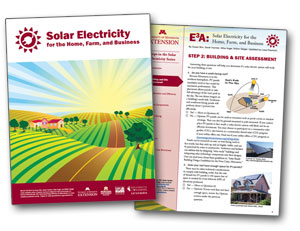
Solar Electricity for the Home, Farm, and Business: Solar Electricity for the Home, Farm, and Business is a series of factsheets designed to help you determine if a solar electric system will work for you. Topics include site assessment, sizing, costs, installation, and more. |
||
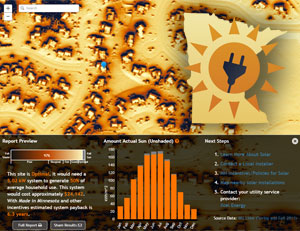
MN Solar App: Wondering if a particular site in Minnesota is good for solar energy? The MN Solar App can help. You start by entering an address and clicking on a location, then you can see an overview and full report of solar potential with more tools to move forward. |
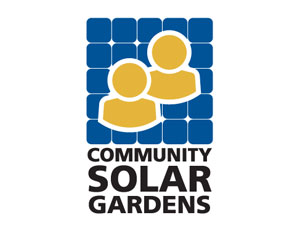
Community Solar Gardens: Perhaps you live in an apartment, have a shaded roof at home, or don’t have space at your organization. You might be able to subscribe to a centrally-located Community Solar Gardens and get credit on your electric bill. |
|
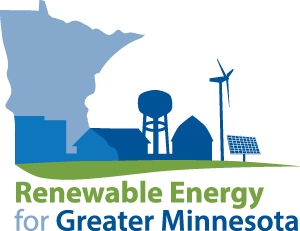
Renewable Energy for Greater Minnesota: Solar, wind, and biomass are plentiful sources of clean energy in Minnesota, and we’re here to help farmers and rural small businesses get projects done. CERTs offers tools to pursuing renewable energy projects. |
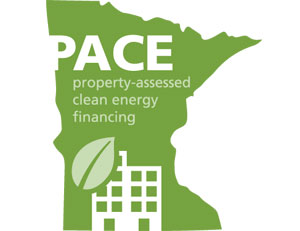
Commercial PACE Financing: Property Assessed Clean Energy (PACE) is a way to finance energy efficiency and renewable energy upgrades to the buildings of commercial property owners with costs repaid through property tax assessments. |
|
Planning Your Solar Project
Energy Efficiency First |
 |
Before adding solar energy production, limit your need for additional energy by making your farm or business as energy efficient as possible. All of our utilities have incentives for efficiency improvements, so be sure to ask your utility. You can also check out the CERTs resource page for energy efficiency to learn more.
Get Educated |
 |
Understand what sort of system is right for you. Solar technologies come in differing models. Any one of these technologies might be right for you depending on your energy use and the solar resource available at your site:
- A photovoltaic (PV) system offsets electric energy use
- A solar thermal hot water system reduces demand for fuels needed to heat water
- A solar thermal air heat system lowers demand for fuels needed to heat buildings
Dig Deeper: You can learn more about solar using our guide, Solar for the Home, Farm, and Business, a series of factsheets designed to help you determine if a solar system will work for you.
Start Planning |
 |
Consider your sun exposure, budget, and roof life and structure.
- Sun Exposure: It is important to consider the solar resource at your site. You can get a sense for the solar resource at your site using the Minnesota Solar Suitability App. A solar site assessor can help you decide which technologies are the best fit. Assessments will provide insight on the solar resource and potential structural issues. Our solar directory provides a directory of solar installers who can provide this information.
- Alternatives to Installing Your Own Project: If you don’t have a good solar resource on your roof or property and you’d still like to use solar, you should consider subscribing to a community solar garden if one is available to you. Community Solar Gardens are centrally located solar photovoltaic (PV) systems that produce electricity for participating subscribers. Xcel Energy customers can participate in projects offered by private developers. Members of other utilities in Minnesota can subscribe to a community solar garden if one is offered by the utility. Click here to learn more. If your utility does not offer community solar, they might have a separate green pricing program that allows you to sign up for renewable energy—ask them to learn more.
- Planning and Zoning: It’s important to check in with your local city/county about ordinances that might be in place that would impact your solar project. Some require setbacks or structural assessments, for instance. Your solar installer should have a good handle on this process, but it’s worth knowing in advance.
- Budget: Installers should be able to provide a good cost estimate for a project you’re considering, and incentives can make solar more affordable. A federal tax credit can cover up to 30% of the project cost, and utilities often have incentives, too. You should also consider the Made in Minnesota Solar Program if interested in using locally-made products. Check DSIRE for more utility and other incentives.
Get Bids |
 |
Compare bids from several solar contractors. You can use the solar directory, to help you search for solar installers. Consider this useful set of questions that you can ask companies. TIP: Most contractors will charge you a fee for coming out to do a site assessment, but then subtract that amount from your contract if you select them. Sometimes you can get site assessments for free or reduced costs in the winter.
Install Solar |
 |
Select a contractor, sign a contract, and install your system TIP: It usually takes from two weeks to two months from the time you sign an agreement to the time a project is completed, depending on the type of solar technology and the incentive process. If installing PV, your contractor will facilitate an interconnection agreement with your electric utility that will allow you to track your production and get paid for excess production with net metering.



